Glutinous rice flour have you ever eaten it? Let me ask you more precisely. Have you heard of sticky rice/sweet rice?
If the answer is yes. Then I would like to say they are similar to each other.
These are actually the staple ingredients in any Asian household. It is a popular type of flour that is redefining the food scene.
Many Asian families use glutinous rice flour to make foods like kimchi, mochi, and rice cakes. It is a fantastic ingredient to make any sweet dish. You will definitely get a nice mouth-feel.
However, glutinous rice flour brings delicious rice-based foods to the table. With good nutritious value and gluten-free content, people can undoubtedly enjoy it. Also, they can find substitutes for glutinous rice flour.
In this article, we’ll inform you about glutinous rice flour. What it’s the alternative, the distinction between glutinous rice flour and rice flour, is it gluten-free, and so on.
Table of Contents
What is glutinous rice flour?
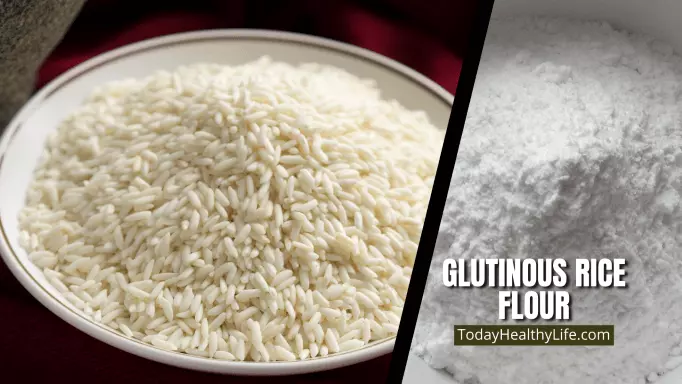
Glutinous rice flour, also known as sticky rice flour or sweet rice flour, is a type of flour made from glutinous or sticky rice.
Despite its name, glutinous rice does not contain gluten. Instead, the term “glutinous” refers to the sticky and chewy texture of the rice when it is cooked.
To produce glutinous rice flour, the grains of glutinous rice are ground into a fine powder.
The resulting flour has a distinctively sticky and elastic quality due to the high amylopectin content in glutinous rice. Amylopectin is a type of starch that gives the rice its unique texture.
Glutinous rice flour is commonly used in Asian cuisines (Bangladesh, Burma, Indonesia, Philippians, etc), particularly in dishes that require a sticky consistency.
It is a staple ingredient in many traditional desserts, such as mochi, rice cakes, and various dumplings.
The sticky nature of glutinous rice flour makes it ideal for binding ingredients together and creating chewy textures in these dishes.
It’s worth noting that glutinous rice flour is different from regular rice flour, which is made from non-glutinous rice varieties.
Regular rice flour has a lighter texture and is commonly used in baking, as a thickening agent, or as a gluten-free alternative to wheat flour.
Also read:
- Rice flour– how to make it at home, is it gluten free? substitute & all.
- What is finger millet flour? nutrition, benefits & side effects.
- What is Kamut flour? benefits, is it gluten free, nutrition & all.
Glutinous rice flour substitute
In case you are unable to find glutinous rice flour. And don’t know how to replace it in the recipe.
Fortunately, there are some substitutes available in the market. You can add those in a certain amount to make your desired dish.
Here we’ve made a list of glutinous rice flour substitutes. Let’s take a look at it.
1. Almond flour
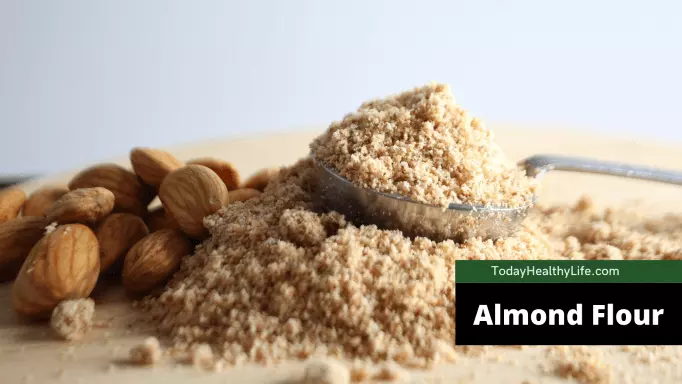
First, almond flour. Almond flour is identical to glutinous rice flour in several ways, although it is gluten-free and has lower carbs. Even after that, almond flour is a suitable option for replacement.
Offering it is a perhaps preferable option to glutinous rice flour. Because almond flour already has a wide variety of nutritious data.
In addition, you need to add additional ingredients to almond flour to make that stickiness. On the other side, almond flour has more deliciousness than glutinous rice flour.
Nonetheless, if you want some of the nutty taste of almonds, this will undoubtedly be a delicious boost.
2. Tapioca flour
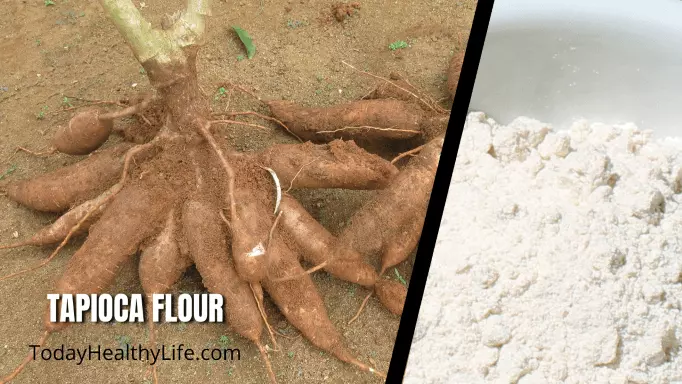
You may have known it as tapioca starch. Tapioca flour is the superior substitute for glutinous rice flour. Having many of the same characteristics may go for a similar amount as the original.
Tapioca flour is manufactured by dehydrating and crushing yuca or cassava plants, the same as glutinous rice flour. The mouthfeel is a little chewy and starchy. Like tapioca flour, glutinous rice flour isn’t particularly sweet.
Moreover, if you are using tapioca flour, add a bit of salt. Otherwise, add it directly to the recipe without any confusion.
3. Potato starch
Potato starch is a fine powder with practically no taste. Primarily, it is used in recipes to add texture.
You can compare it with white rice flour. Because potato starch also keeps the thick consistency and moisture in baked goods.
Furthermore, you can add a little added sugar or some other sweetener. It will enhance the flavor.
4. Coconut flour
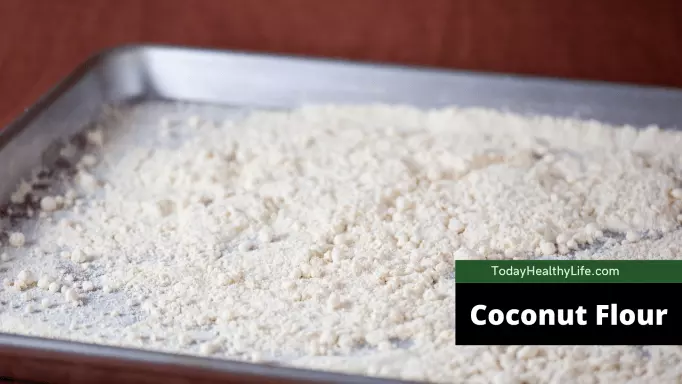
Most experts, as well as home cooks, choose coconut flour. It’s popular because of its low cost, accessibility, pleasant aroma, and nutritional benefits.
The making process of coconut flour is drying and grinding to attain powder-like consistency.
Now, it is easy to replace glutinous rice flour with coconut flour. Because coconut flour is naturally sweet, there is no need for additional sugar.
Just add 1.5 cup coconut flour instead of 1 cup sweet rice flour as an alternative.
In addition, you will need to alter the liquid level of the mixture as coconut flour is less sticky than glutinous rice flour.
5. Sorghum flour
Another option is sorghum flour, a gluten-free substitute for glutinous rice flour. As a result of its high nutritional value, it is gaining popularity in the healthy food market.
Sorghum flour has a mild natural sweetness. In fact, it is identical to glutinous rice flour. But not as sticky as glutinous rice flour. Therefore, you need some form of binder to make the dish.
Additionally, you can replace glutinous rice flour with sorghum flour in equal amounts. Mainly it depends on the recipe. Just add a little extra sorghum flour to attain the optimum texture.
6. Cornstarch
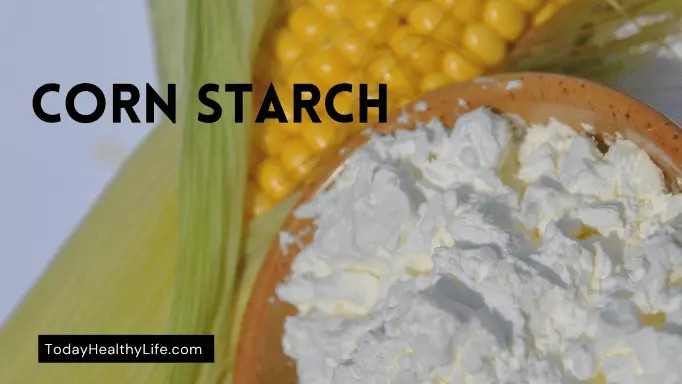
If you’re using glutinous rice flour to thicken sauces, cornstarch is a good substitution for that.
With heat or not, glutinous rice flour will thicken the mixture nearly instantly. Cornstarch, on the other hand, thickens as it warms. So don’t add more than you really need.
Again, remember to dilute the cornstarch in cold water before putting it. Generally, most of the liquid blends pretty fast with cornstarch but just in case.
Normally the ratio is one cup of liquid and around two teaspoons of glutinous rice flour.
7. Oat flour
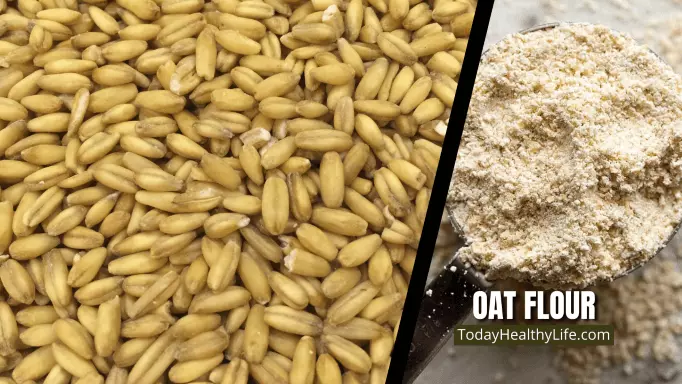
It is common to use gluten-free oat flour in baking, porridge, and soup. Nonetheless, because oat flour is high in fats, it won’t last long if left to its own devices.
You can buy oats flour in small quantities on a regular basis.
Then, apply oats flour in the same way as you would glutinous rice flour. It will more likely be useful for oats than for glutinous rice flour, allowing you to be more creative with this cereal.
Also read: Oat flour substitute, nutrition, calories, gluten free, healthy, & all.
8. Cassava flour
Making cassava flour requires powdered cassava roots. Despite its importance, cassava flour matches potatoes and is suitable for cooking.
Cassava flour is also high in protein, satisfying, and nutritional value. It might also be a good substitution for glutinous rice flour if you’re looking to produce gluten-free baked foods.
Moreover, almost in any prepared food, You can use this alternative. However, while preparing bread, it is strongly recommended that you combine it with other types of flour.
9. Pastry flour
Pastry flour is a minimal protein flour. Mainly it gets used to make cakes smoother and more delicate than cakes prepared with glutinous rice flour. You will see a low barrier while mixing.
Again, instead of using all-purpose flour, you can try pastry flour. In this case, the bread will be airier and waffle knit. It will enhance the layer and overall texture of the dough.
As a matter of fact, use 112 cups of pastry flour with some glutinous rice flour when replacing.
Lastly, it has a lower gluten level. And pastry flour is ideal for prepared foods such as muffins, cakes, and snacks.
10. Seitan flour
Seitan is a meat replacement for vegetarians created by soaking wheat dough to remove the starch. Wheat’s main protein component is seitan.
In any instance, you might argue they’re quite similar. But seitan is denser than glutinous rice flour. When combined with water, it becomes even greasier. It will work better for constructing stretchable ready meals.
Therefore, seitan flour can also be mixed with other flours, such as oat or wheat, to produce it less sticky for other meals.
Equally, when preparing bread, its sticky characteristic may cause the air to escape, causing the loaf to become thick and hearty.
Glutinous rice flour VS rice flour
Many individuals misinterpret rice flour and glutinous rice flour for one another. It could be because the surnames of the substances are alike, causing an inaccurate presumption about the contents.
And that is why here we will try to solve the confusion.
| Differences | Rice flour | Glutinous rice flour |
An overview | Long or medium grain rice is milled to make rice flour. Its thickening capabilities and tendency to impart chewy and elastic qualities to many foods make it popular in Asian cooking. Furthermore, rice flour is gluten-free, keeping it light and stretchy. | Glutinous rice is soaked and loosened in water, then rinsed and pulverized with water, squeezed, evaporated, and sun-dried. After drying, the powder is mashed and then further dried. Glutinous rice flour has a gooey, chewy texture. |
Consistency, flavor, and weight | Rice flour comes from white flour. It has a powder consistency. Rice flour is not as sticky as glutinous rice. Further, one cup of rice flour weighs roughly 4.6 ounces (130 grams). | Similarly, glutinous rice flour is white in color as it also came from white rice. Despite being known as sweet rice flour, glutinous rice flour is not sweet. It is very much chewy. One cup of glutinous rice flour also weighs roughly 4.6 ounces (130 grams). |
Common uses | You can make rice cakes, noodles, pancakes, rice crepes, desserts, and other Asian foods with rice flour. Likewise, brown rice flour is a great option for baking desserts such as brownies and cakes for its taste. | In Asian cuisine, glutinous rice flour is commonly incorporated, especially in sweets. A chewy texture makes it suitable for making boba pearls and mochi. It’s utilized more like starch in baking, letting baked goods absorb water. Mochi doughnuts, ball-shaped rice cakes, sweet potato and coconut desserts, and sesame balls are some examples of recipes using glutinous rice flour. |
Substitutes | • Cornstarch • All-purpose flour • Tapioca starch • Potato starch • Wheat flour • Almond Flour • Coconut Flour • Sorghum flour • Chickpea flour • Millet flour | • Almond flour • Sorghum flour • Arrowroot flour/powder • Tapioca flour • Potato flour • Coconut flour • Oat flour • Cassava flour • Pastry flour • Seitan flour |
Does glutinous rice flour contain gluten?
Glutinous rice doesn’t contain any gluten.
In spite of its name, glutinous rice is gluten-free. Glutinous or sticky rice has more starches than conventional rice, which makes it stickier when prepared.
Sweet and sour recipes often incorporate glutinous rice in Asian cuisine.
Additionally, glutinous rice flour is gluten-free, high-carbohydrate, and low-fat. People with celiac disease prefer eating glutinous rice flour. So, we can say it is safe for you whether you are gluten intolerant or not.
Nutritional values of glutinous rice flour
Glutinous rice flour is a nutrient-dense flour. Consuming glutinous rice flour, for instance, will provide you with a decent amount of minerals such as zinc and B vitamins.
Not only that, but it also contains protein and contains no fat. Isn’t it fantastic?
The following chart contains all nutrients for glutinous rice flour per 100g.
| Nutrients | Value (per 100g) |
| Net carbs | 20.09g |
| Protein | 2.02g |
| Fats | 0.19g |
| Carbs | 21.09g |
| Calories | 97 kcal |
| Sugar | 0.05g |
| Fiber | 1g |
| Calcium | 2mg |
| Iron | 0.14mg |
| Magnesium | 5mg |
| Phosphorus | 8mg |
| Potassium | 10mg |
| Sodium | 5mg |
| Zinc | 0.41mg |
| Copper | 0.05mg |
| Vitamin E | 0.04mg |
| Vitamin D | 0µg |
| Vitamin C | 0mg |
| Vitamin B1 | 0.02mg |
| Vitamin B2 | 0.01mg |
| Vitamin B3 | 0.29mg |
| Vitamin B5 | 0.22mg |
| Vitamin B6 | 0.03mg |
| Folate | 1 µg |
| Vitamin B12 | 0µg |
| Vitamin K | 0µg |
| Tryptophan | 0.02mg |
| Threonine | 0.07mg |
| Isoleucine | 0.09mg |
| Leucine | 0.17mg |
| Lysine | 0.07mg |
| Methionine | 0.05mg |
| Phenylalanine | 0.11mg |
| Valine | 0.12mg |
| Histidine | 0.05mg |
| Cholesterol | 0mg |
| Saturated fat | 0.04g |
| Monounsaturated fat | 0.07g |
| Polyunsaturated fat | 0.07g |
Health benefits of glutinous rice flour
The health benefits of glutinous rice flour are numerous. You will find many advantages for your overall health. We tried to share some of the benefits you will get from glutinous rice flour.
Let’s take a look at it.
1. Improves digestion
As previously stated, glutinous rice flour contains fiber, which aids digestion. In fact, fiber meals can help gut health by preventing constipation, gas, and cramping.
The solution is to consume glutinous rice flour with fresh vegetables. This type of healthful element can aid in the optimal health digestive tract.
2. Helps in weight loss
Glutinous rice flour may reduce appetite due to its high fiber content.
The fiber content may assist in weight management and hunger reduction.
Then there’s the matter of maintaining a healthy body weight.
Isn’t that an amazing advantage?
3. Assist with Chronic disease prevention
Glutinous rice flour contains selenium as well as other essential nutrients. These nutrients may help the body develop antioxidant properties. Also, it lowers the risk of chronic disease and reduces oxidative stress.
4. Encourage liver health
Glutinous rice flour is beneficial to a healthy liver. It’s because most rice flour contains choline, which helps transfer cholesterol and triglyceride levels from the liver.
As a consequence, it can undoubtedly improve optimum liver function.
5. Enhances bone health
Glutinous rice flour has several vital nutrients that may help you develop strong bones and decrease the chances of osteoporosis as you grow.
6. Cure inflammation
Inflammation prevention is one of several health advantages of glutinous rice flour. Copper, zinc, and B vitamins are all connected to this condition.
Thankfully, they’re doing a fantastic job in the body to build a robust defense and immune function.
For a reason, using glutinous rice flour to avoid swelling and inflammation is a wonderful idea.
7. Improves metabolism
Several B vitamins included in glutinous rice flour are known to play a role in the body’s metabolism, namely enzyme production, hormone levels, and other vital metabolic functions.
8. Boost heart health
Lastly, because glutinous rice flour is fat-free, it may improve overall heart health. It may then be a useful option for preventing some health issues, such as high blood pressure and heart difficulties.
Furthermore, good health is unquestionably required to keep a healthy heart.
How to make glutinous rice flour?
Glutinous rice flour comes from glutinous rice kernels. Later those kernels are ground into flour. In Asia, they use glutinous rice with a short-grain size.
You can find this rice type in abundance all over Asia.
Firstly, take a cup of short-grain rice. You may manufacture roughly 2 cups of sweet rice flour with this handmade glutinous rice flour.
Next, rinse and strain your sticky rice multiple times until the water comes clear to make glutinous rice flour at home. Now, soak the rice overnight or for at least 8 hours.
After resting, the rice should have expanded to nearly twice its normal form. Ensure that the rice is dry. Once the rice has fully dried, crush it in a blender until it becomes a powder.
Remember to extract any large lumps from the powder form with a separator. Here is your homemade glutinous rice flour.
Side effects of glutinous rice flour
Glutinous rice flour, like most food ingredients, is generally safe to consume for the vast majority of people.
However, some individuals may experience side effects or allergic reactions, although these instances are relatively rare.
Here are some potential side effects associated with glutinous rice flour:
- Allergic reactions: Some people may be allergic to glutinous rice or its components, leading to symptoms such as itching, hives, swelling, difficulty breathing, or anaphylaxis. If you suspect an allergy, it’s essential to avoid consuming glutinous rice flour and consult a healthcare professional for proper evaluation and guidance.
- Digestive issues: Consuming large quantities of glutinous rice flour or having an existing sensitivity to rice products might lead to digestive discomfort, bloating, gas, or diarrhea.
- High carbohydrate content: Glutinous rice flour, like regular rice flour, is high in carbohydrates. Overconsumption of high-carb foods can contribute to weight gain and potentially elevate blood sugar levels in individuals with diabetes or insulin resistance.
- Lack of essential nutrients: Glutinous rice flour lacks some essential nutrients found in whole grains. Overreliance on this flour without a balanced diet could lead to nutritional deficiencies.
It’s essential to practice moderation and a balanced diet that includes a variety of foods to minimize the risk of any potential side effects.
If you experience any adverse reactions after consuming glutinous rice flour, it’s advisable to discontinue its use and seek medical advice if necessary.
As with any dietary change or concern, consulting with a healthcare professional or registered dietitian can provide personalized guidance and recommendations.
Related FAQs:
Here are some frequently asked questions (FAQs) about glutinous rice flour:
No, glutinous rice flour and regular rice flour are not the same.
Glutinous rice flour is made from sticky or glutinous rice, which contains a higher amount of amylopectin, a type of starch that gives it a sticky texture.
Regular rice flour, on the other hand, is made from non-glutinous rice varieties and has a lighter texture.
Despite its name, glutinous rice flour does not contain gluten.
Gluten is a protein found in wheat and related grains, but it is not present in rice, including glutinous rice.
Therefore, glutinous rice flour is safe for those with gluten-related disorders like celiac disease or gluten sensitivity.
Glutinous rice flour has a sticky and elastic texture when cooked or mixed with liquids.
It is used in various Asian desserts and dishes to create a chewy and adhesive consistency.
Glutinous rice flour is not a suitable direct substitute for wheat flour in most baking recipes, especially those that require gluten development.
It lacks the protein structure necessary for traditional baking. However, it can be used in some gluten-free recipes or Asian desserts that call for a sticky and chewy texture.
Glutinous rice flour is a key ingredient in numerous Asian desserts and snacks.
Some popular dishes include mochi, rice cakes, tangyuan (sweet rice dumplings), sesame balls, and various types of rice puddings.
Glutinous rice flour is high in carbohydrates and can impact blood sugar levels.
People with diabetes should consume it in moderation and consider its impact on their overall carbohydrate intake.
Yes, glutinous rice flour can be used as a thickening agent in certain dishes, just like regular rice flour or other starches.
However, be mindful of its sticky nature, as it may create a thicker consistency than other thickeners.
Conclusion
In this article, we have shown you several aspects of glutinous rice flour. From the brief discussion to side effects. I hope you have got all your answers regarding glutinous rice flour.
However, glutinous rice flour has several substitutes and is full of benefits. It will bring different flavors and advantages to your diet.
